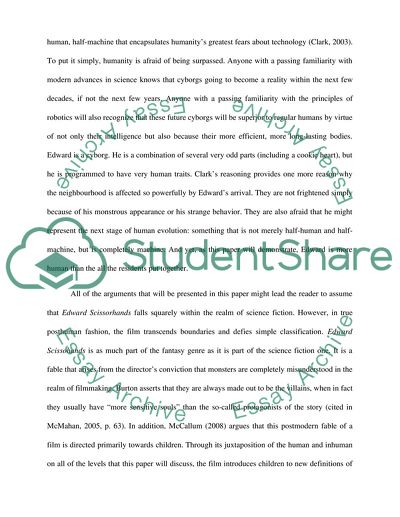Cite this document
(The Human and Posthuman in Edward Scissorhands Essay, n.d.)
The Human and Posthuman in Edward Scissorhands Essay. Retrieved from https://studentshare.org/visual-arts-film-studies/1717760-examine-the-representation-of-cyborg-subjectivity-in-edward-scissorhands-film-discussing-the-tension-between-the-human-and-the-posthuman
The Human and Posthuman in Edward Scissorhands Essay. Retrieved from https://studentshare.org/visual-arts-film-studies/1717760-examine-the-representation-of-cyborg-subjectivity-in-edward-scissorhands-film-discussing-the-tension-between-the-human-and-the-posthuman
(The Human and Posthuman in Edward Scissorhands Essay)
The Human and Posthuman in Edward Scissorhands Essay. https://studentshare.org/visual-arts-film-studies/1717760-examine-the-representation-of-cyborg-subjectivity-in-edward-scissorhands-film-discussing-the-tension-between-the-human-and-the-posthuman.
The Human and Posthuman in Edward Scissorhands Essay. https://studentshare.org/visual-arts-film-studies/1717760-examine-the-representation-of-cyborg-subjectivity-in-edward-scissorhands-film-discussing-the-tension-between-the-human-and-the-posthuman.
“The Human and Posthuman in Edward Scissorhands Essay”, n.d. https://studentshare.org/visual-arts-film-studies/1717760-examine-the-representation-of-cyborg-subjectivity-in-edward-scissorhands-film-discussing-the-tension-between-the-human-and-the-posthuman.


